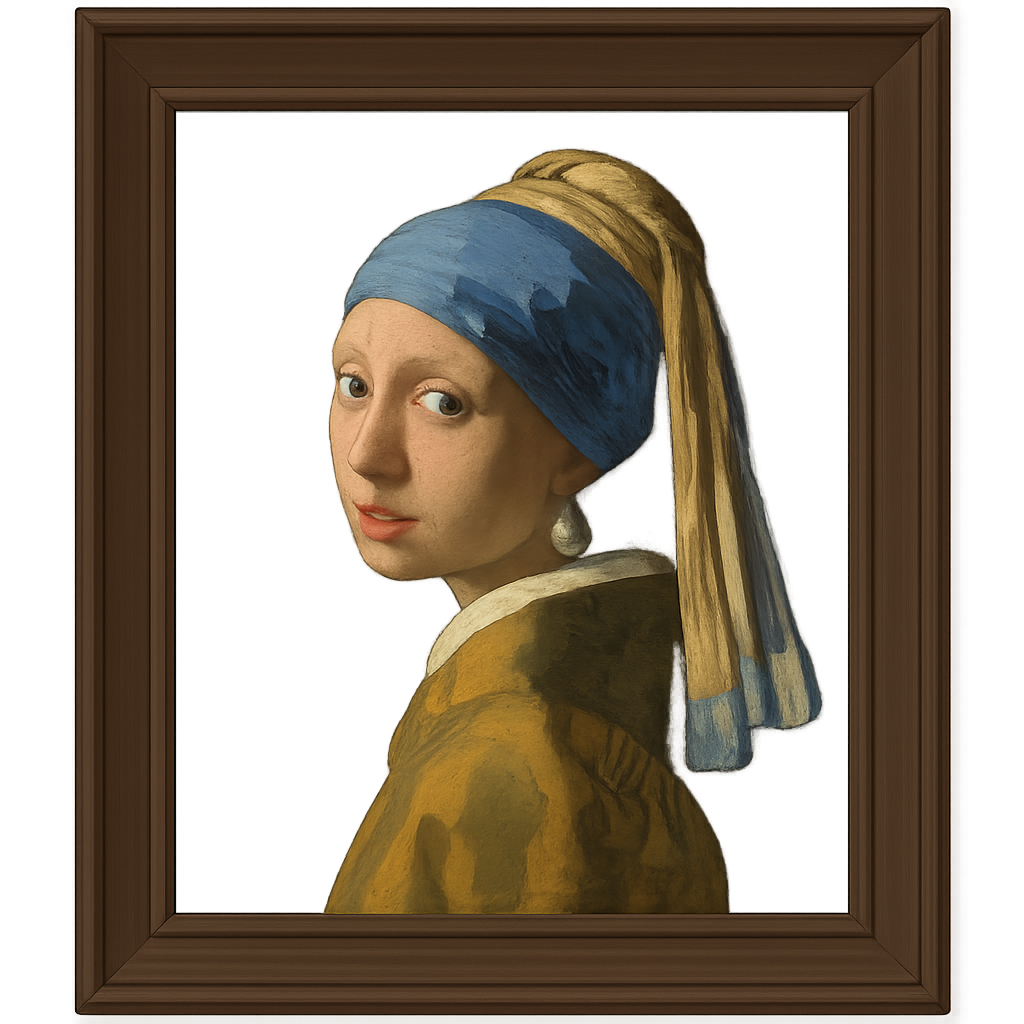The Girl with a Pearl Earring
For a long time, I was just darkness. A quiet, empty space waiting for something to happen. Then, one day, a brush touched my canvas surface. It felt like a gentle tickle, then a soft whisper of color. Slowly, out of the black background, a face began to appear. First came the warm glow of a cheek, then the curve of a nose, and two wide, curious eyes that seemed to look right out at you. A swirl of brilliant blue and sunny yellow paint was wrapped around my head, becoming a beautiful turban. The artist saved the most important part for last. With two simple strokes of white paint, he created a single, perfect teardrop shape hanging from my ear. It wasn't just paint; it was a glimmer of light, a captured star. And with that final touch, I came alive. I am the Girl with a Pearl Earring.
My creator was a master of light named Johannes Vermeer. He worked in a quiet room in the city of Delft, in a country called the Netherlands, around the year 1665. His studio was his whole world, filled with sunlight that poured through a window on the left. He was a slow, careful painter who loved to capture ordinary moments and make them feel magical. Can you imagine spending weeks just getting the color of a headscarf exactly right? That’s what he did. He wasn’t trying to paint a portrait of a famous queen or a rich merchant. He was creating what is called a ‘tronie’—which is a special kind of painting that isn’t of a specific person, but of a character or a fascinating expression. I am a painting of a fleeting moment, a girl turning to look at you as if you just called her name. Vermeer used clever dabs of paint to trick your eyes. He made my turban look like soft, folded fabric, and my skin glow as if lit by a candle. And my pearl? It’s just a few touches of white and gray paint, but he placed them so perfectly that the pearl seems to catch the light and shine all on its own.
After Master Vermeer finished painting me, my life took many turns. He passed away in 1675, and for over two hundred years, I was mostly forgotten. I was sold, passed from one owner to another, and my bright colors grew dull under layers of dust and dirt. For a while, I was lost to the world, just an old, dark painting hanging in a forgotten corner. But then, in 1881, a man with a keen eye named Arnoldus Andries des Tombe saw me at an auction. I was in terrible shape, but he saw something special hiding beneath the grime. He bought me for almost nothing and took me home. He had me carefully cleaned, and it was like waking up from a long, deep sleep. The brilliant blue of my turban, the soft pink of my lips, and the bright shine of my pearl earring returned, as bright as the day Vermeer painted them. Mr. des Tombe loved me so much that he decided I shouldn't belong to just one person. In 1902, he gifted me to the Mauritshuis museum in The Hague, so that everyone could see me.
Now, I live a very different life. I hang on a quiet wall in the museum, and every day, people from all over the world come to visit me. They stand in front of me, and we share a silent moment. Their eyes meet mine, and I can see them wondering. Who was this girl? What is she thinking? Is she happy, or surprised, or a little bit sad? I never answer, of course. That is my secret. I am more than just oil paint on a canvas. I am a connection to a quiet room from hundreds of years ago. I am a reminder that a single, simple moment of curiosity and beauty can last forever, inspiring stories, poems, and wonder in the hearts of people I will never even meet. And my pearl, a little dot of light, continues to shine across time.
Reading Comprehension Questions
Click to see answer
